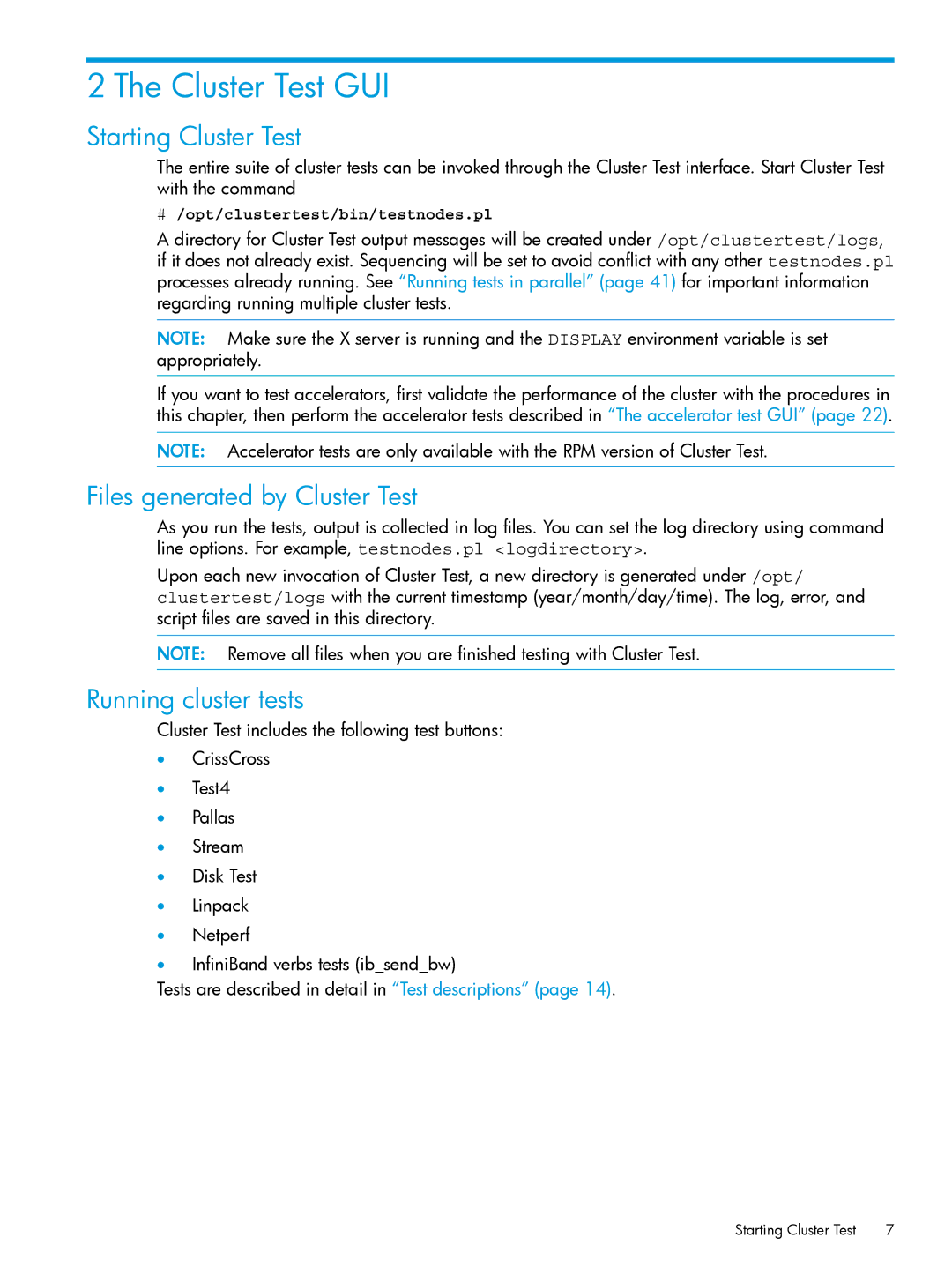
2 The Cluster Test GUI
Starting Cluster Test
The entire suite of cluster tests can be invoked through the Cluster Test interface. Start Cluster Test with the command
#/opt/clustertest/bin/testnodes.pl
A directory for Cluster Test output messages will be created under /opt/clustertest/logs, if it does not already exist. Sequencing will be set to avoid conflict with any other testnodes.pl processes already running. See “Running tests in parallel” (page 41) for important information regarding running multiple cluster tests.
NOTE: Make sure the X server is running and the DISPLAY environment variable is set appropriately.
If you want to test accelerators, first validate the performance of the cluster with the procedures in this chapter, then perform the accelerator tests described in “The accelerator test GUI” (page 22).
NOTE: Accelerator tests are only available with the RPM version of Cluster Test.
Files generated by Cluster Test
As you run the tests, output is collected in log files. You can set the log directory using command line options. For example, testnodes.pl <logdirectory>.
Upon each new invocation of Cluster Test, a new directory is generated under /opt/ clustertest/logs with the current timestamp (year/month/day/time). The log, error, and script files are saved in this directory.
NOTE: Remove all files when you are finished testing with Cluster Test.
Running cluster tests
Cluster Test includes the following test buttons:
•CrissCross
•Test4
•Pallas
•Stream
•Disk Test
•Linpack
•Netperf
•InfiniBand verbs tests (ib_send_bw)
Tests are described in detail in “Test descriptions” (page 14).
Starting Cluster Test | 7 |
